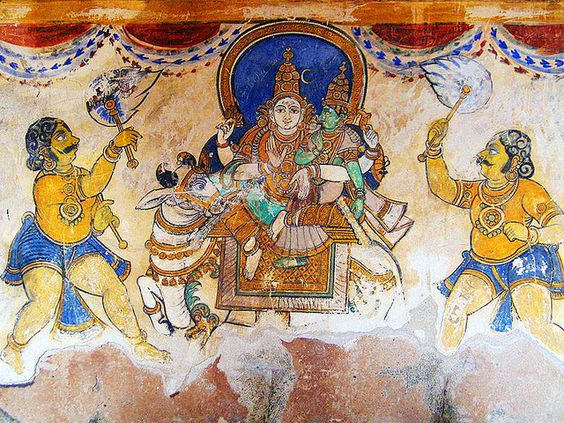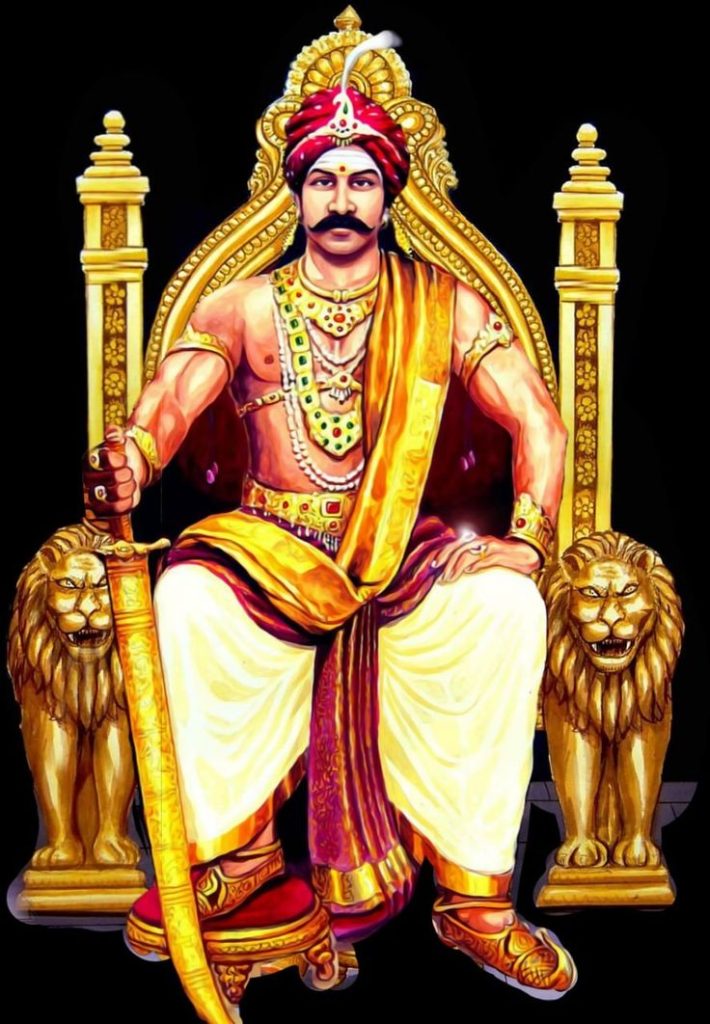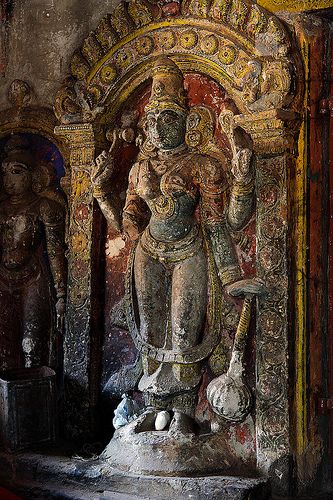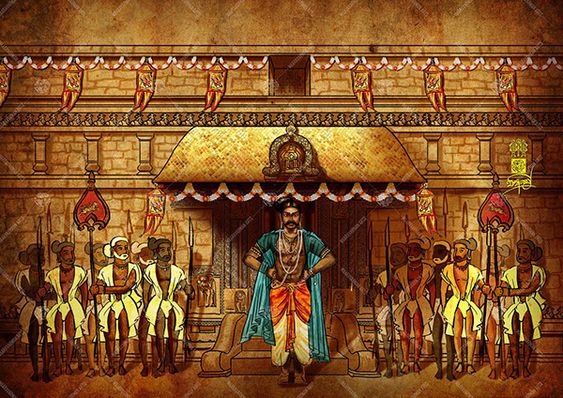Chola Dynasty - Introduction
The existence of early Chola dynasty can be traced during the period of Sangam literature and the time of Ashoka. However , during their early period Cholas were not in a dominating power and ruled small territory.
The great Chola dynasty that we read about is the medieval one that has ruled for more than 300 years from 907 CE to 1215 CE.
This period witnessed the rule of some of the strongest and wisest kings of south India – RajaRaja I and Rajendra I being the greatest among all. These rulers annexed others territories like Chalukyas, and Pala and increased the Chola empire to a very large extent which included Maldives in the south and till the banks of Godavari in the north , making it one of the largest and strongest empire in the world.
Chola rulers had special enthusiasm for Hinduism , architecture and temples. So , various temples and sculptures were constructed during their rule. Brihadeshwar temple at Thanjavur which was constructed by Raja Raja I. in 1010 CE is a perfect example of the Chola architecture.

Chola Dynasty- History and Origin
The origin of Cholas can be traced back to 3rd century BCE, as they find mention in Sangam Literature of similar period. According to Sangam literature Cholan kings existed since a very early age and these Chola rulers can be termed as early Cholas. These rulers were not as powerful as the medieval Cholas. Their rule declined when the Pallavas and Pandyan rose to power around 3rd century CE.
The significance of Cholas was now limited to subrulers , or landowners and smaller aristocrats. This continued until ,Vijayalaya , the first ruler of medieval Chola dynasty rose to power from Uraiyur . It is interesting that Uraiyur was also the capital of early Cholas.
The Medieval Cholas
When war broke out between Pallava and Pandya , then Cholas used this opportunity and seized the power. Vijayalaya captured Thanjavur( now called Tanjore) and made it his capital. This marked the beginning of the new Chola empire which became one of the largest and longest ruling empire in Indian territory due to the might and strength of more powerful successors like Raja Raja and Rajendra I.
Aditya Chola , who was the son of Vijayalaya defeated the Pallavas and caused its extinction , similarily the Rashtrakutas were defeated by Parantaka I , the son of Aditya.
Raja Raja and Rajendra I
Raja Raja Chola
Raja Raja was the son of Parantaka II . He was a devout disciple of Lord Shiva and called himself Shivapada Shekhara , meaning ‘ the king who placed his crown at the feets of Shiva’. Although he was a Shiva follower , he was tolerant towards others faith, and constructed various Vishnu temples . He also constructed Buddha temple.
Raja Raja was responsible for integrating small territories and consolidating entire Chola empire into a united empire under strict governance . The naval army of Raja Raja was of the largest strength during that time.
In 1010 CE ,under the rule of Raja Raja I the great living Chola temple of Brihadeshwar, dedicated to Shiva, was also constructed.
Rajendra Chola I
Under Rajendra , several military expeditions were sent to Northern plains , and southeast asia , due to which the rule of Cholas expanded till Maldives in south and in the north upto the Ganges-Hooghly- Damodar basin .
To celebrate his victory in Northern India , Rajendra I shifted his capital to a new place called GangaikondaCholapuram in Tamil Nadu in 1025 CE. It served as the capital of cholas for the next 250 years. For this he earned the title ‘Gangai-Konda Cholan’.
He also constructed another Brihadeshwar temple at Gangai Konda cholapuram similar to the one at Thanjavur.
All Rulers of Imperial Chola dynasty
1.Vijayalaya Chola (848 CE)
2.Aditya I
3.Parantaka Chola I
4.Gandaraditya Chola
5.Arinjaya Chola
6.Sundara Chola
7.Uttama Chola
8.Rajaraja Chola I
9.Rajendra Chola I
10.Rajadhiraja Chola
11.Rajendra Chola II
12.Virarajendra Chola
13.Athirajendra Chola
14.Kulothunga Chola I
15.Vikram Chola
16.Kulothunga Chola II
17.Rajaraja Chola II
18.Rajadhiraj Chola II
19.Kulothunga Chola III
20.Rajaraja Chola IIIn
21.Rajendra Chola III(1279 CE)

Conquest By Cholas
The conquest started since the rule of very first ruler Vijayalaya , when he captured Thanjavur, followed by Aditya I ,who captured the territory of Madurai from the Pallavas and Pandyas. Parantaka supressed the Rashtrakuta dynasty .
However , the real annexations in the empire began during the rule of Raja Raja I , who captured Sri Lanka , the entire Malabar coast and the islands of Lakshadweep and Maldives.Under Rajaraja Chola I and his successors Rajendra Chola I, Rajadhiraja Chola, Virarajendra Chola, and Kulothunga Chola I, the dynasty became a military, economic and cultural power in South Asia and South-East Asia.
Rajendra I is famous for launching naval expedition on the kingdom of Srivijaya and capturing it completely.
Military and War Strength of Cholas
Cholas military was divided into cavalry , infantry , elephantry and a robust navy. King was the supreme commander of all of these. Weapons such as swords, bows, javelins, spears and shields which were made up of steel, were commonly used in wars.
The navy of Cholas was the largest of that time comprising of 600 to 1000 ships , and it became a symbol of Chola supremacy in southern India.
To protect the capital city and some economic centres forts were build surrounding the areas , which were protected by with catapults that threw stones, huge cauldrons of boiling water or molten lead, and hooks, chains and traps .
Culture and Traditions of the Cholas
The rulers of Cholas were enthusiastic in the field of arts, culture and literature and during their rule , the state touched new heights in all these fields.
The period witnessed the revival of Hinduism with the construction of new temples and generation of new Vaishnava and Shaivite literature along with Jain and Buddhist traditions.
New arts were developed , magnificient sculptures and inscriptions describing the glory of Chola empire were made . All this contributed in forming a legendary history of South India , and preserving it for the modern ages .
Since , the kingdom of Cholas extended till Maldives and Sri Lanka , we can witness the effect of the culture of Hinduism in these areas .
The Prambanan temple of Indonesia , shows many similarity with Tamil architecture in temple carvings and sculptures.
Tamil literature reached new heights during Chola rule . The Tamil version of Ramayan called ‘Ramavataram’, written by Kamban , was also written during this period .
Later rulers like Virarajendra also set up schools and hostels for students to learn Vedas and Shastras. They were provided with all facilities like food , lodging, hospitals for free .
Shaivism as a religious tradition flourished immensely during this period . Shaivite literature was written and practiced in the temples. Grand temples were constructed .
Although , the rulers were tolerant to all faiths , but Vaishnavite tradition could not flourish , may be due to the strong belief of the local people in Shaivism and their own traditions.
However , the inscriptions mentions the relations of Chola rulers with the temple of Shri Rangnath(Vishnu) in Karnataka where they prayed before wars and donated wealth.
Temple and Architecture
Chola dynasty is famous for the grand temples with beautiful architecture of Dravidian style.
The Brihadeshwar temple of Thanjavur, Brihadeshwar temple of Gangaikondacholapuram, and the Airavateshwar temple at Darasuram in Tamil Nadu, are collectively referred to as ‘The Great Living Chola Temples’.
These are declared as World Heritage site by UNESCO.
Gopuram ( a large sized entrance gate in the temple ) was a feature introduced in the architecture of temple during Chola rule which is followed in many south Indian temples.
The temples constructed by the rulers were not just a spiritual place but also a economic centres where people were given grants ,free food was distributed, and they stood as the symbol for the sovereignty and strength of the empire.

Decline of Chola Empire
Till the rule of Kulothunga Chola II , the rule of Cholas was stable and integrated ,but the rulers after him were not as capable as the early rulers.
They started loosing their grip over northern states to the Chalukyas and Pallavas.
Most of the southern states were seized by Pandyan rulers and Sri Lanka was taken over by the Sinhala rulers .
The reason for downfall of Cholas , was dishonesty of army , interior issues between rulers like Raja Raja II and Raja Raja III which led to civil wars and lack of resources.
In 1279 , the last Chola king Rajendra Chola III was defeated by Maravarman Kulasekara Pandyan I, and seized control of the empire.
This brought to an end of the imperial Chola rule and the beginning of the Pandyan rule.
